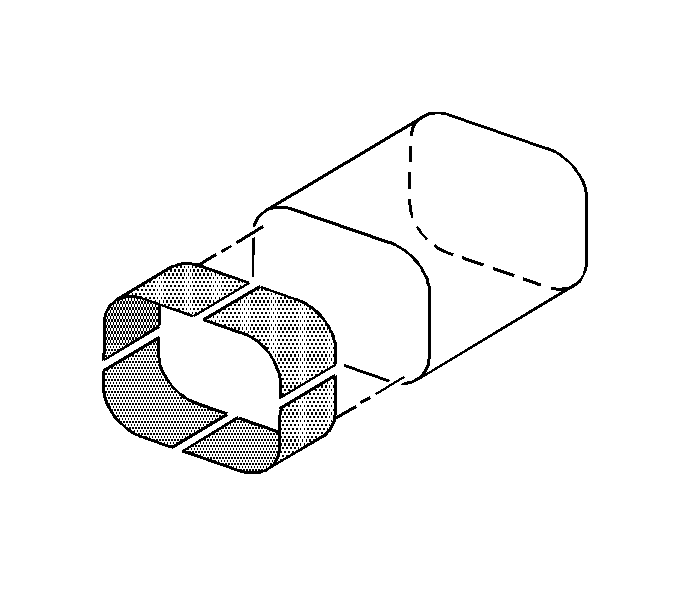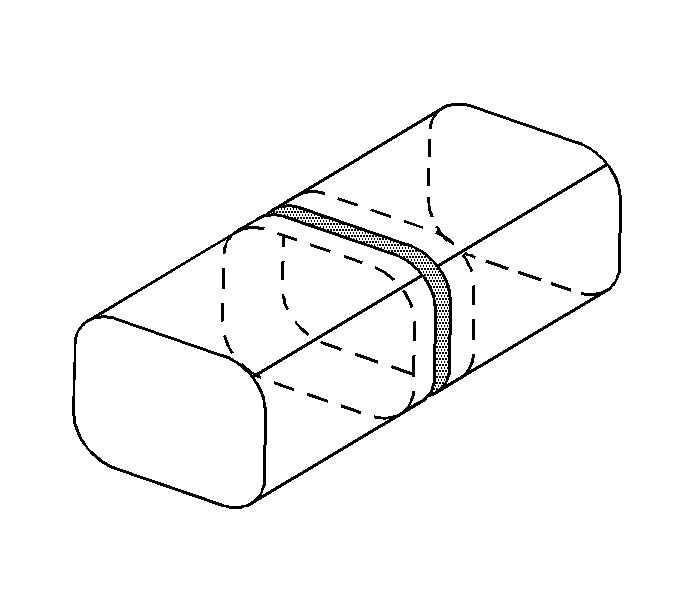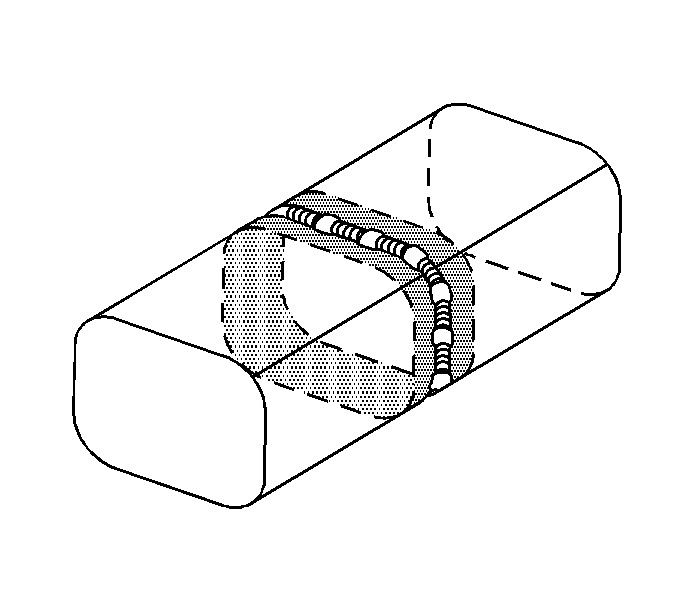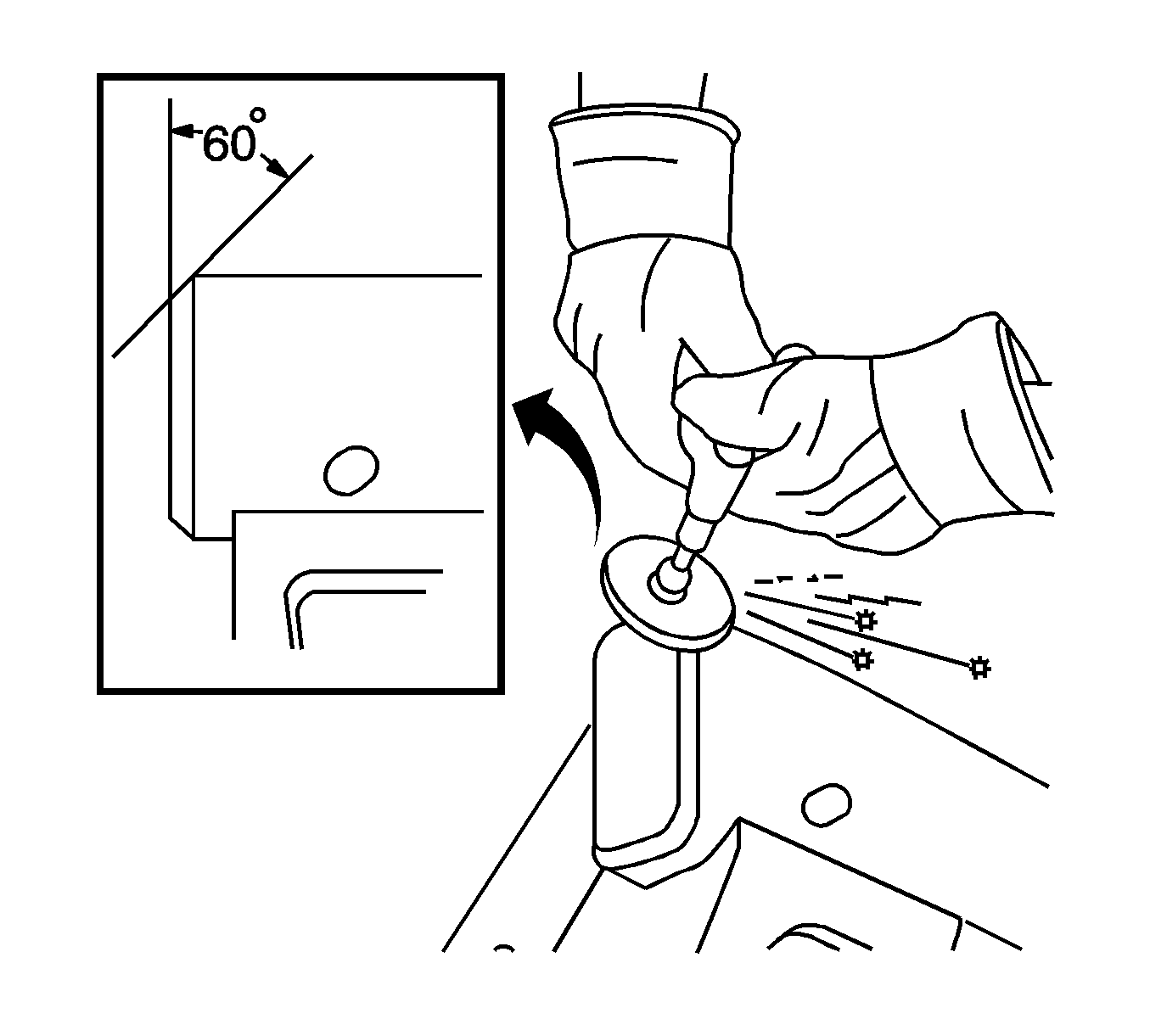Sleeved Butt Joint Repair Corvette
Caution: Refer to Approved Equipment for Collision Repair Caution in the Preface section.
Caution: Refer to Collision Sectioning Caution in the Preface section.
Important: When determining the area to perform the sectioning near a riv-nut within the recommended areas, choose a location that centers the sleeve through the hole. This will ensure that riv-nut fasteners remain straight during installation.
- From the new section of frame rail, measure, mark, and cut 50 mm (2 in) of frame rail to be used as a sleeve (backing plate) for the sectioning joint.
- Cut through each side of the sleeve to create 4 individual L-shaped pieces that can be installed in the existing frame rail.
- Install the 4 pieces, one at a time.
- Trim the pieces as necessary, to provide a flush fit along the inner surface of the existing frame rail.
- Clean and prepare all of the welded surfaces.
- Apply GM-approved Weld-Thru Coating or equivalent to all mating surfaces. Refr to Anti-Corrosion Treatment and Repair .
- Using a metal inert gas (MIG) welder, tack weld the 4 pieces to the inner surface of the existing frame rail.
- Grind the sleeve as necessary to allow for accurate alignment of the new frame rail section.
- Install the new frame rail section to the existing frame rail to create the butt joint while maintaining a gap of one and one half frame rail metal thickness at the sleeve butt-joint.
- Inspect the new frame rail section using three-dimensional measurements.
- Using a MIG welder, weld completely around the sleeve joint.



Important: Use a 50 mm (2 in) stitch weld to avoid minimal heat distortion.
Sleeved Butt Joint Repair Z06
Caution: Refer to Approved Equipment for Collision Repair Caution in the Preface section.
Caution: Refer to Collision Sectioning Caution in the Preface section.
Important: When determining the area to perform the sectioning near a riv-nut within the recommended areas, choose a location that centers the sleeve through the hole. This will ensure that riv-nut fasteners remain straight during installation.
- From the new section of frame rail, measure, mark, and cut 50 mm (2 in) of frame rail to be used as a sleeve (backing plate) for the sectioning joint.
- Cut through each side of the sleeve to create 4 individual L-shaped pieces that can be installed in the existing frame rail.
- Install the 4 pieces, one at a time.
- Trim the pieces as necessary, to provide a flush fit along the inner surface of the existing frame rail.
- Clean and prepare all of the welded surfaces.
- Using a PULSED-MIG welder, tack weld the 4 pieces to the inner surface of the existing frame rail.
- Grind the existing frame rail sectioning location and the new frame rail section to a 60-degree angle.
- Install the new frame rail section to the existing frame rail to create the butt joint while maintaining a gap of one rail metal thickness at the sleeve butt-joint.
- Inspect the new frame rail section using three-dimensional measurements.
- Using a PULSED-MIG welder, complete the welding of the sleeve joint using the 2 minute cooling down period for every 2 minutes or 100 mm (4 in) of welding.

Important: Hand tools, saw blades and abrasives used for aluminum repairs should be dedicated for aluminum only to prevent contamination.
Important: Use a stainless steel brush to remove the oxide layer prior to welding.
Important: Recommend wire alloy is 5356 and wire size is 0.035. The shielding gas is 100 percent Argon.



Important: Recommend 2 weld passes (root and cap).
Recommend wire alloy is 5356 and wire size is 0.035. The shielding gas is 100 percent Argon. A 2 minute cooling down period is recommend for every 2 minutes or 100 mm (4 in) of welding.